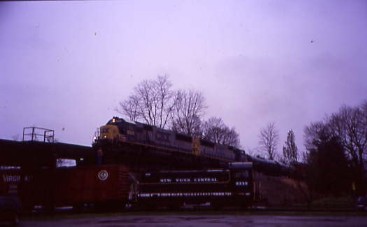
4/13/07 Chris Parker and I had just finished our tour of Amtrak's Beech Grove Shops and stopped at a petrol station for some snacks then we drove US 52 to Rushville, Indiana where we spotted a railroad display and pulled into the parking lot.
A replica Baltimore and Ohio station and a wooden caboose were both on display.
The caboose, history unknown. We left here but drove over to the tracks to check for trains.
We found the real Rushville station, originally owned by Cincinnati, Hamilton and Dayton Railroad built in 1911, which was boarded-up. We drove east on Indiana Highway 44 to Connersville and found the Whitewater Valley Railroad tracks, which we followed south to the shop area and started to explore.
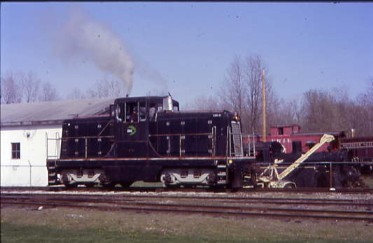
Whitewater Valley 65 ton switcher 1, nee United States Navy 65-00053 built by General Electric in 1943.
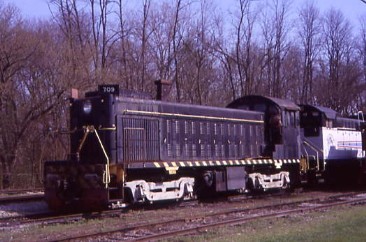
Armco Steel Corporation LS-1000 709 built by Lima Locomotive Works in 1950. It served a steel plant in Ohio for most of its working life before being donated to Whitewater Valley in 1987. The locomotive saw limited service until 1989 when it was sidelined with mechanical issues.
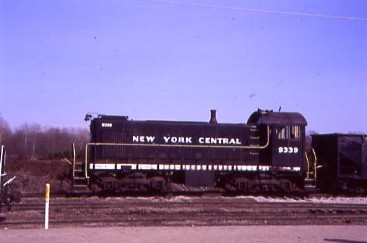
Procter and Gamble Railroad S-1 9 built by American Locomotive Company in 1948 and painted as New York Central 9339. When Procter and Gamble donated this locomotive, it was with the request that it be painted something else than Procter and Gamble. Since the railroad ran on a former New York Central branch, they decided to paint it to represent that company.
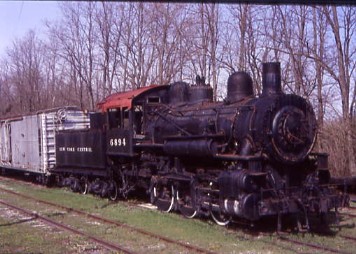
Whitewater Valley 0-6-0 6894, ex. Hagerstown Roundhouse Museum, exx. Charles Smith et al 1971, exxx. Maryland Metals Company 1970, exxxx. Custom Car Service 1969, exxxxx. B.J. Pollard 1966, exxxxxx. Nicholson Terminal and Dock Company 15 1950, exxxxxxx. Wyandotte Southern Railroad 7 1945, exxxxxxxx. New York Central System 6894, nee Michigan Central Railroad Company 8764 built by American Locomotive Company in 1912.
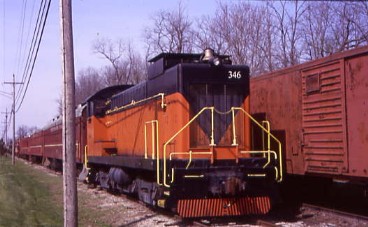
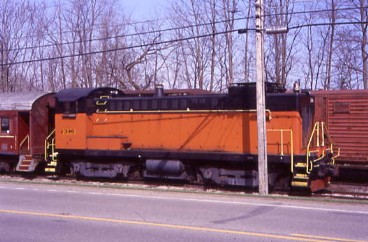
Patapsco and Back Rivers S-12 346 built by Baldwin Locomotive Works in 1951.
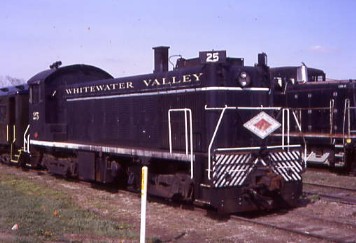
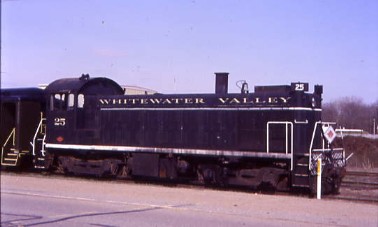
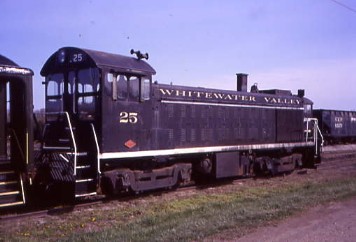
Whitewater Valley Railroad LS-750 25, ex. Cadillac and Lake City 25, nee Cincinnati Union Terminal LS-750 25 built by Lima Locmotive Works in 1951.
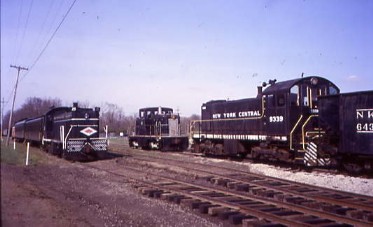
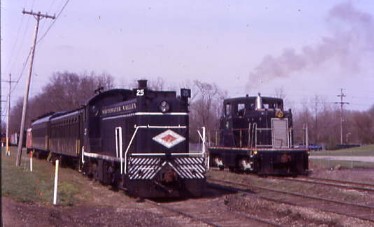
Views at the south end of the Whitewater Valley yard.
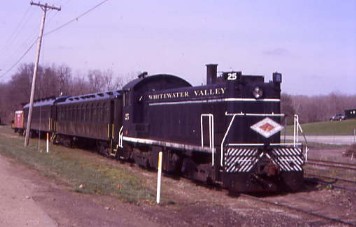
Whitewater Valley 25 on a passenger train.
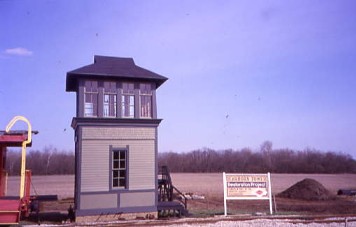
The former Cleveland, Cincinnati, Chicago and St. Louis/Baltimore and Ohio Dearborn tower from Lawrenceburg, Indiana. Known as XN Tower, it was located at the diamond where B&O and NYC crossed on the east end of Lawrenceburg. There was also an interchange track located there.
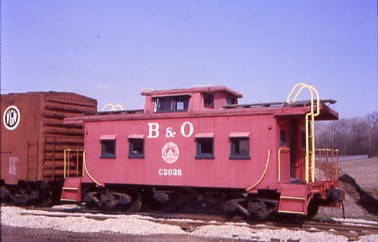
Baltimore and Ohio wooden caboose C-2028 built by the railroad in 1926.
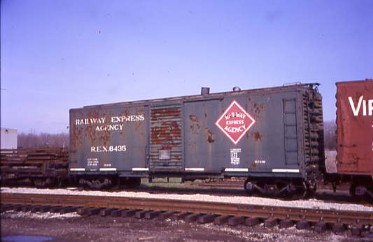
Railway Express Agency box car REX 6435 built in 1935.
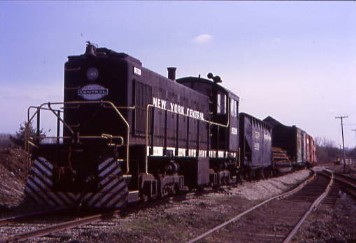
New York Central S-1 9339 on a freight train.
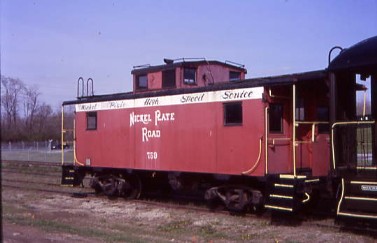
Nickel Plate Road caboose 759, nee Wheeling and Lake Erie 259 built by the railroad in 1949.
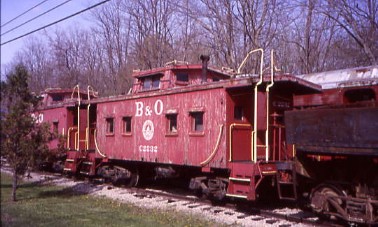
Baltimore and Ohio wooden caboose C-2232 built by the railroad in 1929.
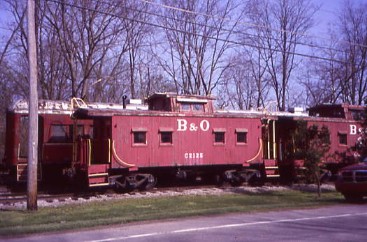
Baltimore and Ohio wooden caboose C-2125 built by the railroad, year unknown.
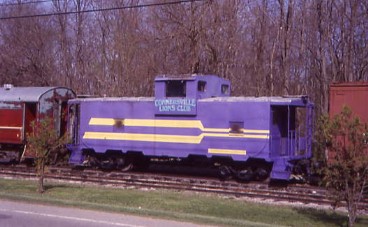
Connersville Lions Club caboose, ex. Seaboard System 21176, nee Seaboard Coast Line 01176, builder and year unknown.
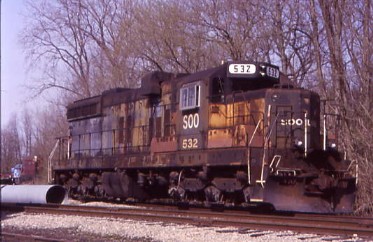
Soo Line SD10 532, nee Chicago, Milwaukee, St. Paul and Pacific 2226 built by Electro-Motive Division in 1954.
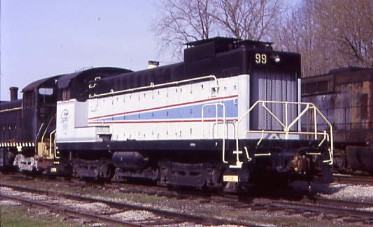
Whitewater Valley Railroad S12 99, ex. Amhearst Industries 99, ex. Bethlehem Mines 1975, ex. Patapsco and Back Rivers S12 335, nee Baldwin plant switcher DS4-4-1000 1 built by Baldwin Locomotive Works in 1949.
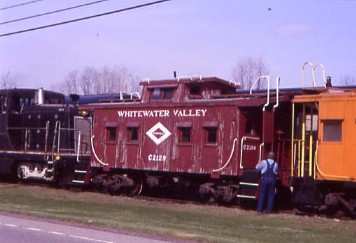
Whitewater Valley caboose C-2129, nee Baltimore and Ohio C2129 built by the railroad in 1927 and acquired in 1974.
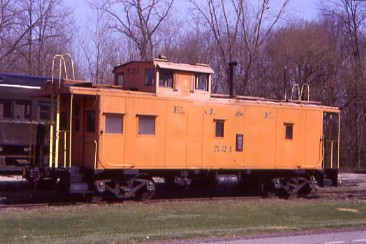
Elgin, Joliet and Eastern caboose 521 built by International Car Company in 1956.
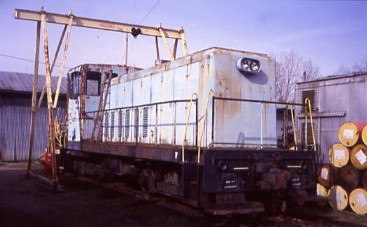
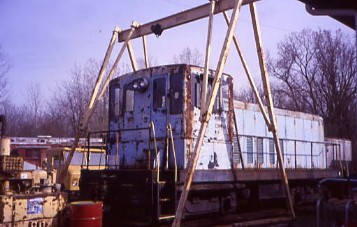
Muncie and Western Railroad Company 70 ton switcher 8 built by General Electric in 1946. This was the railroad's last locomotive and the company was owned by the Ball Corporation of Muncie, which manufactured the famous Ball jars used in canning.
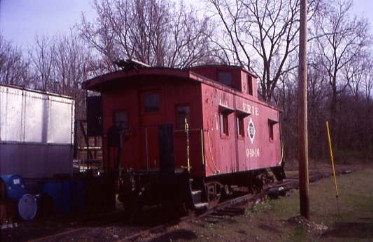
Erie Railroad caboose 04946 built by Magor Car Corporation in 1930.
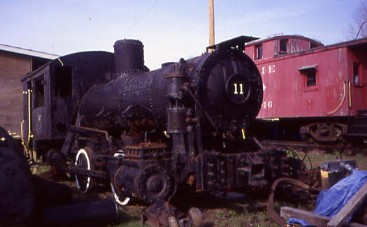
Southwest Portland Cement 0-4-0T 11 built by Vulcan Iron Works in 1924.
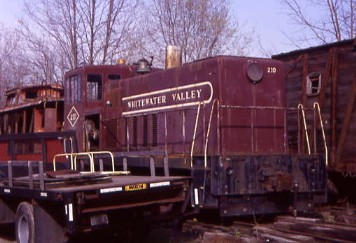
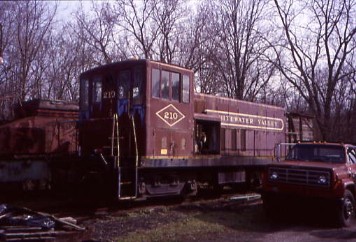
Whitewater Valley Railroad 70 ton switcher 210, ex. Central Wisconsin Railroad 210, nee Calumet & Hecla Copper 210 built by General Electric in 1946.
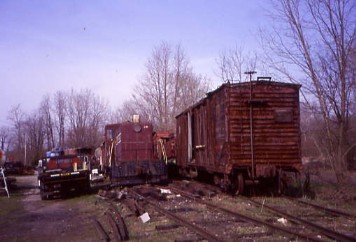
Yard scene.
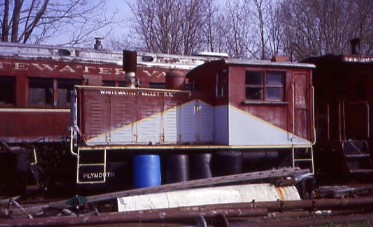
Whitewater Valley ML-6 30 ton switcher 2561, ex. France Stone Company, nee Wagner Quarries built by Plymouth in 1930.
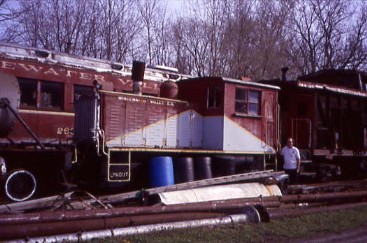
Me by the Plymouth.
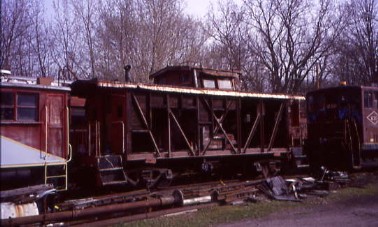
Caboose frame.
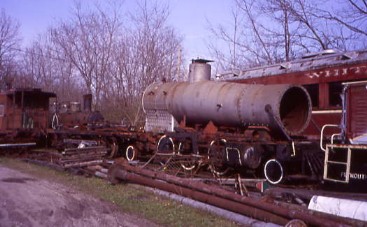
Whitewater Valley 2-6-2 100 1977, ex. Louis Zadnichek et al 1974, exx. corporate sale to Jim Walter Door Company, exxx. corporate sale to Alger-Sullivan Company 1957, exxx. Alger-Sullivan Lumber Company 100, nee Florala Sawmill 100 built by Baldwin Locomotive Works in 1919.
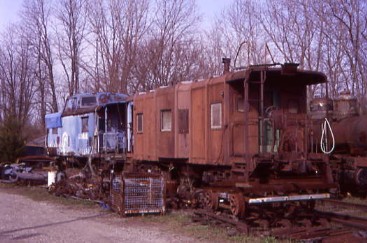
Cabooses.
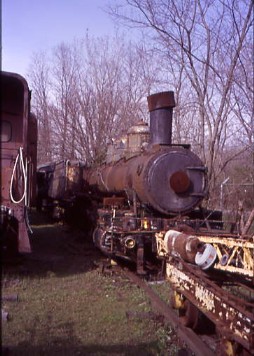
East Broad Top 0-6-0 6 built by Baldwin Locomotive Works in 1907 and acquired by Whitewater Valley Railroad in 1975.
Chris and I decided to go to our hotel to check in and along the railroad north of town, we spotted some engines sitting along the highway. The Connersville and New Castle Railroad has a small shop here so we pulled over.
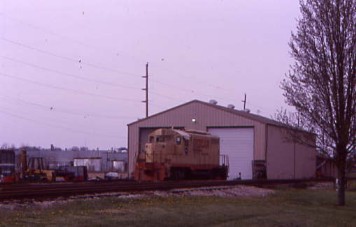
The Connersville and New Castle Railroad shop. An early short line holding company, Indiana Hi Rail started with a 5.2 mile former New York Central line in 1981, adding the 21 mile line to New Castle in 1989. The system grew to include 461 miles of track on various disconnected lines in Indiana, Illinois and Ohio. It also operated and leased boxcars and locomotives through a related company, Indiana Boxcar. The poor track condition of many of the lines acquired by the system led to frequent derailments and delays, which resulted in shipper complaints and lost business. The company filed bankruptcy in 1994 and was sold off piecemeal by the case trustee over the next three years. The line between Connersville and New Castle became the Connersville & New Castle in 1997.
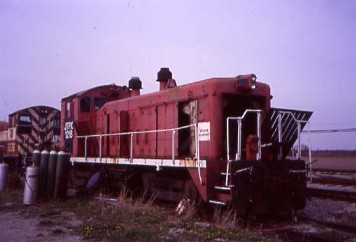
Joseph Transporation SW9 1208, ex. Quaker Oats Company 2015, ex. Relco 1245, exx. David J. Joseph Company 1201, exxx. Lake Terminal Railroad 1201, nee Lehigh Valley 288 built by Electro-Motive Division in 1951.
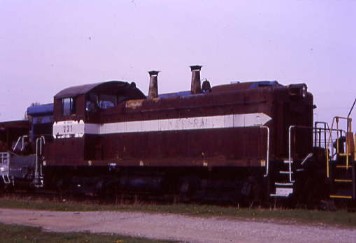
Joseph Transportation SW1200 221, ex. Indiana Hi-Rail 221, exx. Wabash and Erie 221, exxx. Archer Daniels Midland 57, nee Baltimore and Ohio 9621 built by Electro-Motive Division in 1957.
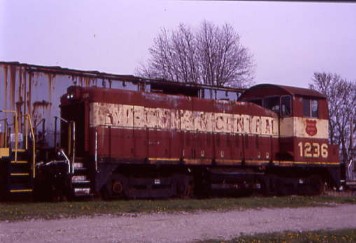
Relco SW1200 1307 2004, ex. Wisconsin Central 1236, nee Southern Pacific 1622 built by Electro-Motive Division in 1995.
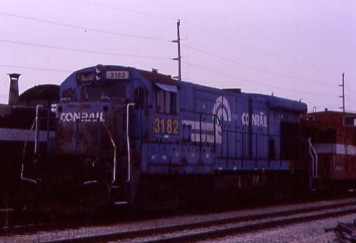
CSX B23-7 3182, nee Conrail 2806 built by General Electric in 1977.
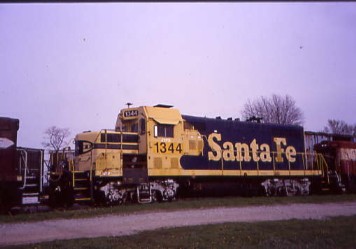
BNSF GP7u 1344, ex. Santa Fe 2757:1, nee Santa Fe GP7 2148:2 built by Electro-Motive Division in 1952 and rebuilt in 1979.
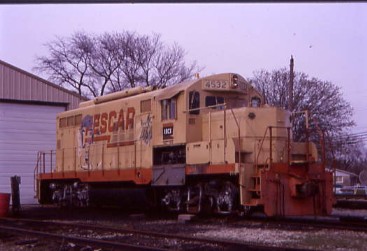
Rescar GP9 4532, nee Chicago and North Western 4532, nee Chicago and North Western 1729 built by Electro-Motive Division in 1957.
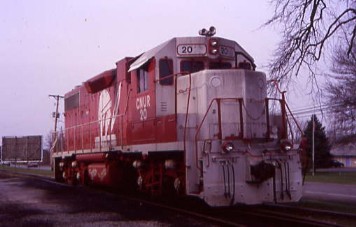
Connersville and New Castle Railroad GP38 20, ex. Connersville and New Castle Railroad 2010, exx. Joseph Transportation 2011, exxx. Joseph Transportation 9400, exxxx. Ferrocarriles Nacionales de Mexico 9400, nee Ferrocarriles Nacionales de México 9400 built by Electro-Motive Division in 1975.
We checked into the Woodbridge Inn and put our luggage in our room then drove south on Indiana Highway 1 to Metamora and the Hearthstone Restaurant, which just happened to be the best restaurant in this part of the state.
The Hearthstone Restaurant where I enjoyed a New York Steak.
After dinner, Lock 24, known as Millville or Gordon's Lock, was one of the 56 locks on the Whitewater Canal constructed to accommodate a 491 foot drop in elevation along its course. The water level could be raised or lowered eight feet. Mitered gates at both ends of the chamber formed a "V" facing upstream. To work the lock, two men pushed the balance beams to open the gates into the recesses in the chamber. The boat entered the lock, and the gates were closed. The sluices were opened in the bottom of the gates at the upper end of the lock, and water from the higher elevation flowed into the chamber. As the lock filled with water, the boat rose. The upstream gates were opened, and the boat continued on its way. The process was reversed if the boat was going downstream.
The Amtrak stop on the Cardinal route is just a platform. We returned to the Woodbridge Inn for the night and anticipated tomorrow's Whitewater Valley Photo Freight.